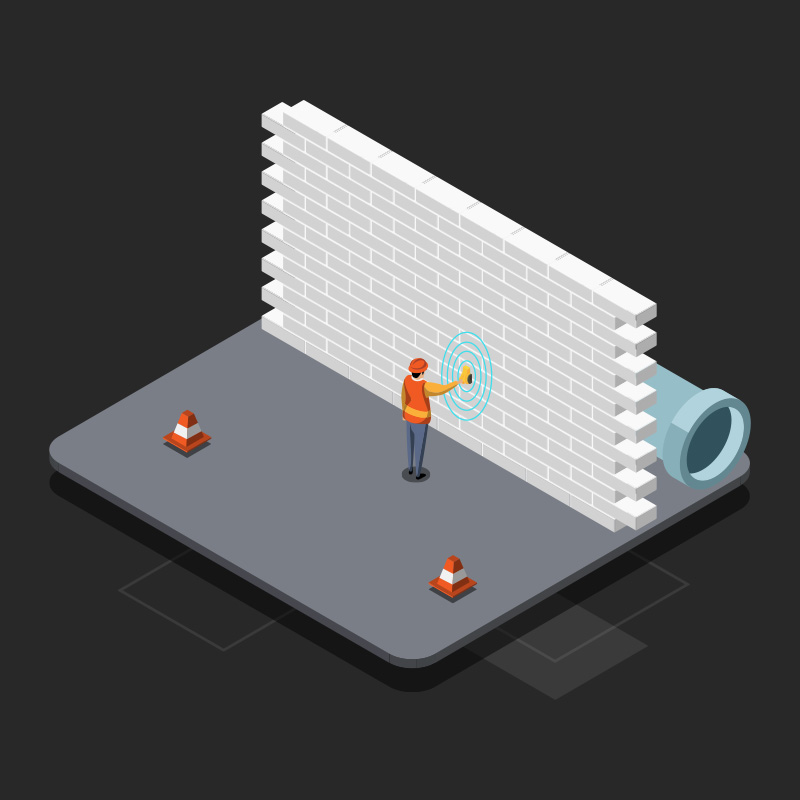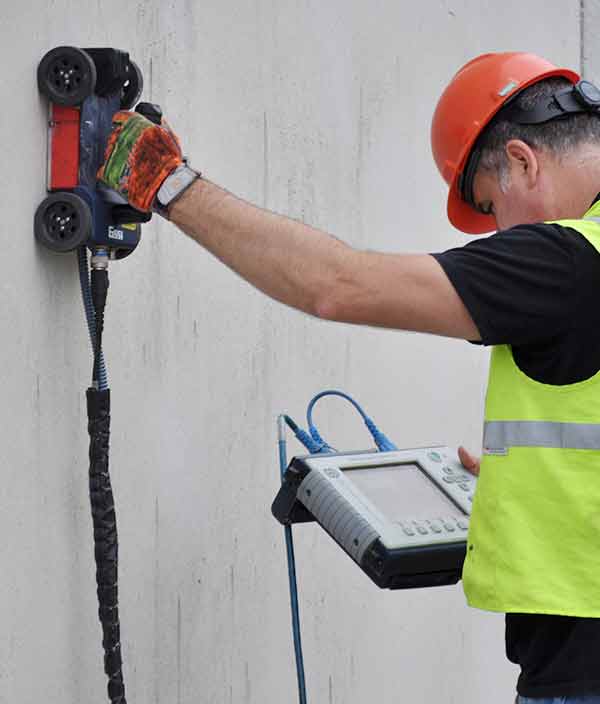Delving Into Precision: the Function of Concrete Scanning in Enhancing Building And Construction Safety and Effectiveness
Concrete scanning, an innovation that has gained significant grip in the market, plays an important role in elevating these basic elements of construction tasks. The effects of concrete scanning prolong far past surface-level benefits, promising a deep-seated influence on the general success of construction undertakings.
Value of Concrete Scanning Innovation
Concrete scanning technology plays a critical function in guaranteeing the safety and architectural integrity of building and construction jobs. By making use of different scanning approaches such as Ground Permeating Radar (GPR) and electromagnetic induction, building and construction teams can identify ingrained things, rebar, channels, and other prospective obstructions within concrete frameworks before beginning any kind of boring or reducing tasks. This technology assists protect against unexpected damages to crucial framework, reduces the danger of architectural failures, and improves total project effectiveness.
Moreover, concrete scanning improves employee safety by supplying accurate info about the condition of concrete components, enabling groups to plan and carry out building tasks with precision. The capability to envision subsurface features in real-time allows job supervisors to make enlightened decisions, minimize potential dangers, and adhere to forecast timelines properly. Furthermore, by recognizing any issues or abnormalities early on, construction teams can carry out rehabilitative actions promptly, avoiding costly rework and delays in the building and construction procedure.
Fundamentally, the significance of concrete scanning innovation depends on its capability to protect building jobs, enhance procedures, and maintain the greatest criteria of safety and security and top quality in the industry.
Enhancing Safety Measures on Site

Concrete scanning technology plays a crucial duty in enhancing security by enabling construction teams to precisely situate potential hazards such as rebar, channels, and post-tension cords installed within concrete frameworks. By recognizing these hazards ahead of time, employees can take essential preventative measures to avoid accidents during drilling, cutting, or coring tasks. This aggressive strategy not just safeguards the health of employees yet additionally aids in preventing costly problems to the framework.
Including concrete scanning right into security protocols demonstrates a dedication to focusing on safety and security on building and construction websites, inevitably causing a lot more reliable and effective job outcomes.
Maximizing Building Project Preparation
Reliable job planning is crucial for the effective implementation of building projects. Maximizing building project intending includes a meticulous technique to organizing, resource allotment, and risk monitoring. By leveraging sophisticated modern technologies like Structure Information Modeling (BIM) and concrete go to this site scanning, job managers can enhance the planning procedure and enhance total project performance. BIM permits the creation of in-depth 3D models that give insights right into the spatial relationships in between various job elements, helping to recognize prospective clashes and problems beforehand. Furthermore, concrete scanning makes it possible for the accurate discovery of subsurface energies and structures, lowering the risk of pricey delays and remodel throughout the building stage. By incorporating this contact form these technologies right into the preparation phase, building groups can proactively address challenges, boost control between different professions, and make certain that projects are completed in a timely manner and within spending plan. Ultimately, enhancing building task preparation is essential for maximizing productivity, lessening waste, and supplying effective end results in the built environment. Concrete Scanning.
Decreasing Task Hold-ups and Dangers
To reduce project delays and threats, thorough preparation and proactive risk management techniques are necessary in the construction market. Delays in construction jobs can cause substantial economic losses, damaged track records, and also security hazards. By making use of concrete scanning innovation, building groups can determine prospective dangers such as underground energies, rebar, or post-tension cords before they rise into pricey problems. This proactive strategy enables adjustments to be made to the job plan, decreasing the probability of delays because of unexpected barriers.
In enhancement to utilizing concrete scanning innovation, clear interaction among job stakeholders is crucial for determining and resolving potential dangers at an early stage. Routine task meetings, updates on development, and open networks for feedback can assist make certain that any problems are without delay dealt with to avoid hold-ups. Having contingency plans in location for typical dangers in building and construction, such as damaging climate problems or product scarcities, can help mitigate the impact of these elements on project timelines. By prioritizing planning and risk management, construction teams can minimize Home Page project delays and risks, inevitably leading to more efficient and effective results.
Improving Overall Efficiency and Performance
Given the significance of precise planning and positive danger administration in lessening task hold-ups and threats in building and construction, an emphasis on boosting general effectiveness and efficiency comes to be imperative. Improving efficiency and productivity in construction tasks entails simplifying procedures, maximizing source appropriation, and decreasing downtime. Spending in devices and methods that focus on effectiveness and efficiency not only advantages specific building and construction tasks yet likewise contributes to the general growth and success of the construction sector.

Final Thought
To conclude, concrete scanning technology plays an essential duty in improving construction safety and performance by enhancing precaution on website, enhancing task planning, reducing risks and delays, and inevitably enhancing overall performance. This technology is important for making certain the successful conclusion of building projects while focusing on the safety of employees and reducing possible risks. Its execution can significantly profit the construction sector in accomplishing greater levels of precision and performance.
Concrete scanning innovation plays a crucial function in making certain the safety and architectural honesty of building tasks. Additionally, by determining any kind of defects or anomalies early on, building and construction teams can carry out corrective steps without delay, avoiding costly rework and delays in the building and construction procedure.
Efficient task preparation is important for the effective implementation of building and construction projects. Investing in tools and techniques that prioritize efficiency and efficiency not just advantages specific construction projects but likewise adds to the total growth and success of the building market.
In final thought, concrete scanning innovation plays a critical role in enhancing construction safety and effectiveness by enhancing security steps on site, enhancing job planning, reducing risks and delays, and ultimately increasing overall performance. - Concrete Scanning